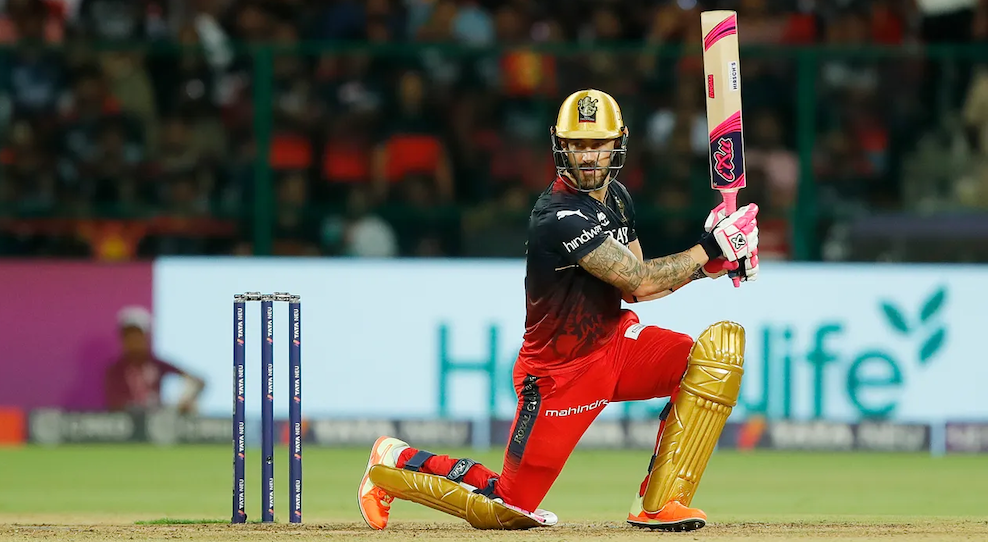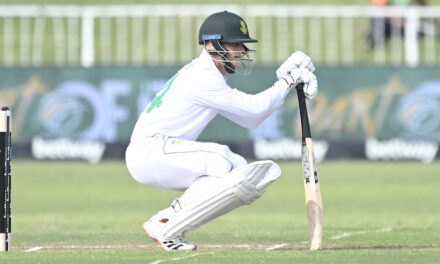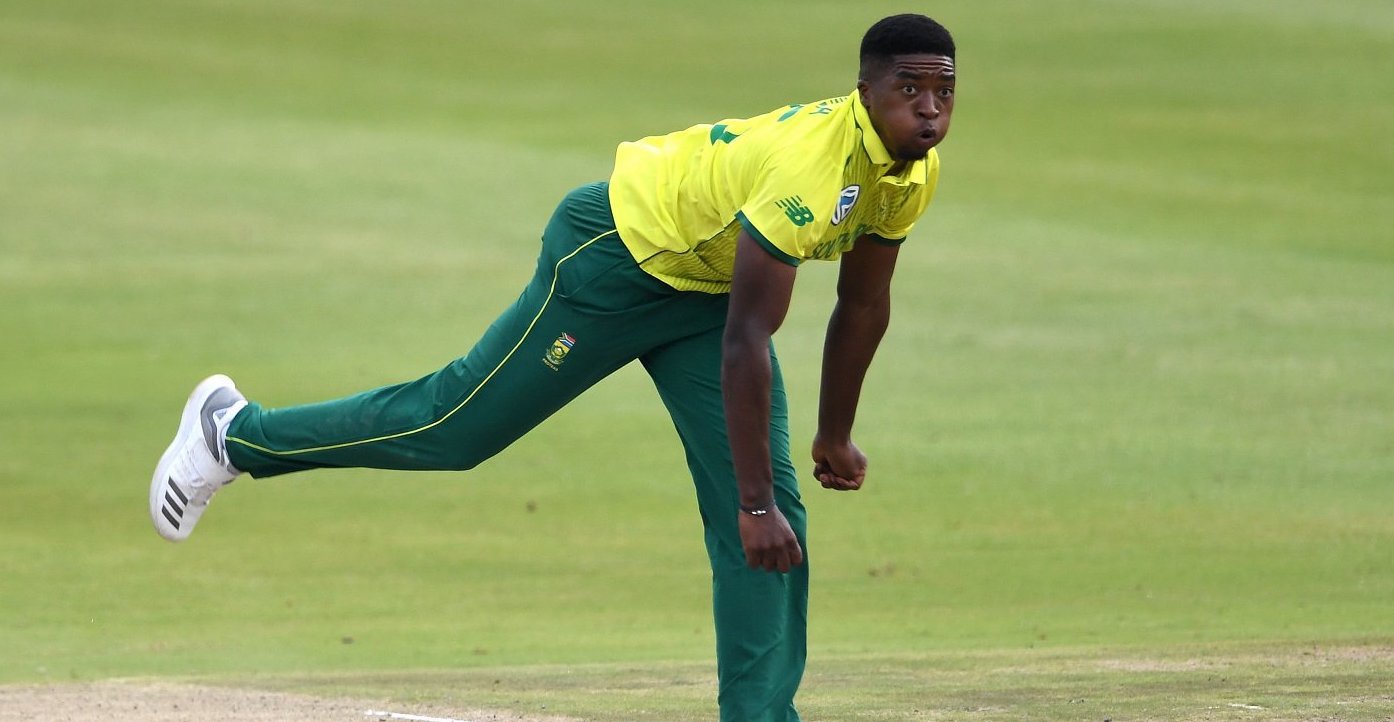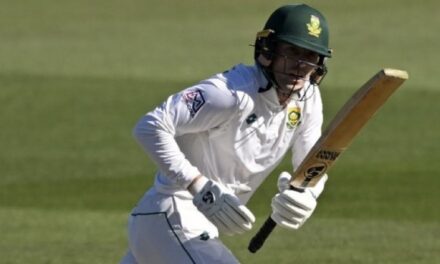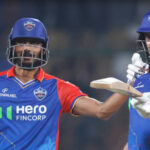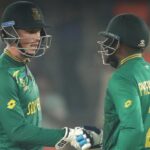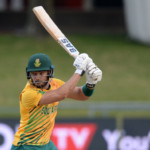After. Chennai Super Kings lifted the 2023 IPL Trophy, we take a look at the South Africans that stood out in this year’s competition.
Faf du Plessis – 730 runs @ 56.15, 8 half-centuries, best of 84, strike rate of 153.68
The former Proteas skipper carried on from where he left off in last year’s tournament. But this time, his consistency was off the charts, with only Shubman Gill outscoring him. Even at 38, his ability to play spin and keep the score steadily moving along has been a treat for viewers. It’s only fitting that he’s now in talks with current Proteas white-ball coach Rob Walter on how he could potentially return to the green and gold, at least in T20Is. His strike rate was beyond impressive for a player who was tasked with anchoring the innings. It may not have been the ideal season for RCB, but Faf is one of many positives.
Wayne Parnell – 9 wickets in 7 games @ 26.22, economy rate of 9.38
It was a mixed bag of an IPL for the veteran Proteas left-armer. RCB signed Parnell as a replacement for the injured Reece Topley, and he had big shoes to fill, since Josh Hazlewood wasn’t fully fit either. However, he bowled a few too many expensive spells, and aside from his excellent 3/10 against Rajasthan, the rest of his returns were quite disappointing.
Heinrich Klaasen – 440 runs @ 49.78, 1 century & 2 half-centuries, best of 104, strike rate of 177.08
Amid a very forgettable season for the Sunrisers Hyderabad, the big-hitting keeper-batter was a silver lining in more ways than one. Whether it was attacking the spinners during the middle overs or giving the innings a late kick, Klaasen excelled on all fronts. In fact, he struck at almost 2 runs a ball against spin. A solid IPL season culminated in a fabulous century against RCB in the penultimate league game. It may have happened in a losing cause, but Klaasen’s strong returns perfectly encapsulated his improvement and fearlessness in white-ball cricket.
Aiden Markram – 248 runs @ 22.55, 1 half-century, best of 50
Last year’s IPL was quite productive for the newly appointed Proteas T20I captain, but this time around, he fell painfully short of expectations. SRH had several relatively inexperienced Indians in their roster, so Markram, soon enough, became the obvious choice to take charge. The onus was on him to lead from the front, both in terms of tactics and individual results, but it wasn’t to be. His highlight was a rapid half-century against KKR, but aside from that, he wasn’t able to capitalize on promising starts.
Marco Jansen – 10 wickets in 8 games @ 26.7, economy rate of 9.89
The young left-armer found it difficult to contain the flow of runs, though he did manage to pick up a few early wickets. His expensive returns at the back end mostly kept his involvement to the early overs, and towards the end of the tournament, he was in and out of the XI. There’s no dispute over his talent, but he still has a long way to go until he becomes a complete package as a T20 bowler as well as a true all-rounder. He has shown plenty of encouraging signs in Tests, ODIs, and more recently, the SA20. However, the IPL is the pinnacle of T20 franchise cricket, and the learning curve can often be unforgiving.
Kagiso Rabada – 7 wickets in 6 games @ 33.14, economy rate of 10.09
In spite of a lacklustre run for Punjab, the experienced, world-class quick became the fastest to reach 100 IPL wickets. But his returns from this year were markedly poorer than those of his previous seasons. Unsurprisingly, he didn’t play all the games for his franchise, and soon enough, Australian death-overs specialist Nathan Ellis superseded him in the XI. Though this has sparked a discussion on Rabada’s status as a T20 bowler. He has maintained impressive stats throughout his international career in Tests and ODIs, but his T20I figures are an anomaly.
Quinton de Kock – 143 runs in 4 games @ 35.75, 1 half-century, best of 70, strike rate of 140.20
Much like his other Proteas peers, the wicketkeeper-batter made a slightly late arrival. In the meanwhile, Kyle Mayers opened the batting for the Lucknow Super Giants, and he seemed to be unstoppable. This brought about an interesting dilemma when de Kock entered the picture. It doesn’t help that he was on the wrong end of a couple of dubious selection calls, but he made a fluent 70 against the Gujarat Titans in what was a near-impossible chase.
Rilee Rossouw – 209 runs @ 29.86, 1 half-century, best of 82*, strike rate of 148.23
The powerful left-hander got his first IPL stint in 8 years with the Delhi Capitals, and he was one of multiple overseas top-order batters in their squad. He wasn’t a regular feature in the XI, with Warner, Salt, and Marsh taking 3 of the 4 possible spots. For a player with vast experience, both in the international and franchise scenes, it was a pretty indifferent IPL campaign, in spite of a sparkling 82* against the Punjab Kings near the close of the season.
Anrich Nortje – 10 wickets in 10 games @ 36.4, economy rate of 9.10
It was a rather patchy season for the fiery SA express pacer. He enjoyed pockets of success in the midst of a relatively middling tournament. His prowess at the death for the Delhi Capitals has often been very reliable, but this time, his radar wasn’t up to the mark. For instance, in the low-scoring thriller against the Gujarat Titans in Ahmedabad, Rahul Tewatia carted Nortje for 3 sixes in a row in the 19th over. Going forward, better returns will be expected, but in any case, this was an important experience with the World Cup only mere months away.
David Miller – 259 runs @ 32.38, best of 46, strike rate of 145.51
2022 was a year to remember for the domineering southpaw, since it was, in many ways, a fairytale IPL comeback. This year was reasonably successful, too, but he had fewer deliveries to face, as his entry point was often very late in the innings. But he had a few knocks to savor, such as a forceful 46 against Mumbai as well as a couple of quick 20’s and 30’s to apply the finishing master strokes.
Sisanda Magala – 1 wicket in 2 games, economy of 8.50
One of the newer additions to the Proteas white-ball sides, the death-overs specialist got his first IPL gig with CSK, as an injury replacement for New Zealand’s Kyle Jamieson. While he had a rough first couple of overs against MI, he bounced back brilliantly in the same game. He bowled another two overs against Rajasthan, but he sustained a hand injury in that same game. That would temporarily sideline him, and the rise of Matheesha Pathirana squeezed out any possibility of a potential return to the CSK XI. Regardless, he will be a useful reinforcement in the squad, should the champions choose to retain him.
Dwaine Pretorius – 1 game
After a decent run last year, the experienced allrounder got to play the early league game against Mumbai, but that was about it. He didn’t do much wrong, but at the same time, CSK didn’t have all their mainstays available. Prior to playing in this IPL, he announced his retirement from international cricket in order to prioritize T20 franchise events.
Duan Jansen – 1 game
MI snapped up Marco’s twin brother, who had played for the Cape Town franchise in the SA20. However, one poor outing against KKR was all he could manage before the management reverted to Riley Meredith. Understandably, it was a tough initiation, as he hasn’t played any international cricket. But he now has gotten his feet wet in the IPL, and could be one for the future.
Tristan Stubbs – 25 runs @ 12.5
From one of the newest introductions to the Proteas T20I squad to now barely finding a spot, it’s been a rather interesting past few months for the young middle-order finisher. He may have been a tad unfortunate not to get more game time, but he wasn’t the only one in that situation.
The Gameless Wonders
Donovan Ferreira (RR)
To say that the multi-skilled Titans youngster was unfortunate not to play even one match for the Rajasthan Royals would be an understatement. With Shimron Hetmyer firing right from the outset, his already slim chances gradually dwindled. However, given that he was a relatively cheaper recruit for the 2022 finalists, there’s a strong likelihood of his retention heading into next year.
Lungi Ngidi (DC)
Since Anrich Nortje was the incumbent overseas pacer, it was always going to be hard for Delhi to accommodate a second overseas pacer. Top it off with the other 3 spots going to batters, and it became an even bigger conundrum. When Nortje was briefly absent, there came an opportunity to play Ngidi, but they ended up choosing all 4 overseas batters. Ngidi is a reliable wicket-taking option, but it’s clear that the DC management wasn’t quite on board. He was also a cheap recruit, but a different team might be able to make good use of his services.
Dewald Brevis (MI)
Ever since he won hearts and widespread acclaim for his free-wheeling strokeplay, Brevis was a bench warmer for the entire 2023 IPL. It was an anticlimax, as he showed glimpses of his potential last year. But the fact that MI often played two overseas pacers and both of their big-ticket stars in Cameron Green and Tim David meant that there simply wasn’t any bandwidth in the XI to slot him in.

